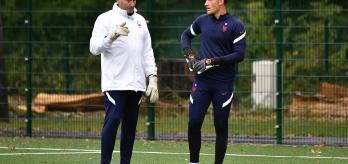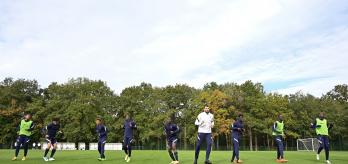The Tuesday afternoon session focuses on overcoming the press applied by Wales’s 4-4-2 diamond. The session begins with two small-sided games centred around combination play and progressing the ball. This is followed by another 11v10 game scenario in a playing area similar to that used in the second half of the morning session. Twenty outfield players and a goalkeeper take part in the session.
Session overview
Key coaching points
-
When playing out from the back, the full‑backs should take up deep‑lying positions and stay as wide as possible to occupy the spaces afforded by Wales’s midfield diamond, thereby distancing themselves from the congested areas in the middle of the pitch.
-
The wide players should also adjust their positioning relative to each other in order to create spaces around the opposing full‑back. When the ball is on the opposite flank, the winger should come infield to force the Wales full‑back to close the space between him and the centre-back, allowing France’s full‑back to use the full width of the pitch by distancing himself from the Wales full‑back.
-
The centre-backs are essential in the build-up phase and must be able to switch the play when necessary. They have to alternate between switching and counter-switching to catch Wales out and exploit the spaces that their midfield diamond cannot cover. Counter-switching involves one of the full‑backs initiating a change of wing by playing the ball to the centre‑back alongside him, who then plays it to the second centre‑back. Instead of completing the switch by playing the ball to the other full‑back, the ball is instead returned to the full‑back who initiated the move, breaking through the opposing block that shifted across with the ball.
-
It is important that the players are patient when facing the opposition’s highly compact block and that they switch the play frequently in order to move the opposition around and create the necessary space to gain ground without risking losing possession.
Exercise 1 – game of 4v4, plus 2 jokers and 4v4, plus 1 joker
The first part of the afternoon session consists of two exercises that work on attacking combination play. The session starts with a game of stop-ball in a 4v4, plus 1 joker, followed by a game with mini-goals in a 4v4, plus 2 jokers. In both games, players are encouraged to play forwards quickly whenever they have the chance to do so, using deep through‑balls and combination play to find the third player.
Game 1
-
Set up a playing area of around 40x20m, with two stop-ball areas, each around 5m deep.
-
Organise two teams of 4, plus 1 joker.
Game 2
-
Mark out a playing area of around 40x20m, with two scoring zones, each around 5m deep.
-
Set up two goals, each positioned around 5m from each touchline.
-
Organise two teams of 4, plus 2 jokers.
Game 1
-
A team earn one point if one of their players dribbles into the stop-ball zone and kills the ball.
-
A team earn two points if one of their players can find a team-mate waiting to receive the ball in the stop‑ball zone.
-
The joker is limited to playing one‑touch.
Game 2
-
The two jokers position themselves in one half of the playing area each and are limited to playing one‑touch.
-
Players must score with one touch; the jokers can also score.
-
None of the players can defend within the scoring zone.
-
There is no offside.
-
The two groups switch playing areas after a number of sequences, as called by the coach.
-
Progress play through one‑ or two‑touch moves and attacking combination play. Players are encouraged to move the ball quickly in tight spaces in order to break through the opposition’s press.
-
Players should seek to play forwards and into the space to get in behind the opposition’s defence. Game 1 in particular encourages players to look to play in behind by making simple passes or finding a third player in the scoring zone.
-
Try to find players between the lines in order to play lay‑offs and gain ground. Players can put into practice the technical exercises from the morning session, centred around retaining and progressing possession.
Exercise 2 – attack v. defence: 4-3-3 v. 4-4-2 diamond
The final part of day 2 comprises another 11v10 game scenario, which aims to prepare the attacking set-up of those players in the starting line-up against Wales. As explained to the players in the video presentation prior to the training session, the full‑backs will be key against Wales’s 4-4-2 diamond, as they will allow the team to bypass the congested areas in the middle of the pitch. This exercise encourages players to use the full width of the pitch and to be patient to overcome Wales’s press.
-
Set up a playing area of around 65m long and across the full width of the pitch.
-
A channel is marked out by cones on each wing.
-
The defending‑team players cannot enter the channels until an attacking‑team player controls the ball in that channel.
-
Place four mini-goals opposite the full‑size goal.
-
The team with 11 players seek to build from their goalkeeper to score in one of the four mini-goals.
-
The team with 10 players attempt to win the ball and finish on goal.
-
When the ball goes out of play, the game restarts from the goalkeeper.
-
At the start of the exercise, the full‑backs take up deep‑lying positions and stay as wide as possible to free themselves from the opposition’s number 8s in the diamond and escape their press.
-
The players are encouraged not to play forwards too quickly when one of the full‑backs first gets on the ball. This means that Wales’s team block will usually have time to shift across on the first pass. The coach therefore asks the players to switch the play to the opposite flank, where there will be more space, given the narrow nature of the opposition’s midfield diamond.
-
Likewise, once Wales’s press has been beaten, France can opt to play backwards in order to switch the play into the space on the opposite flank, if the opposition have had time to regroup and recover their defensive shape.
-
The switches of play must be performed quickly by playing firm passes that reach their intended recipient as quickly as possible in order to reduce the time available for the opponent to press.











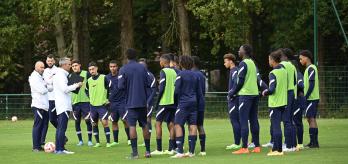
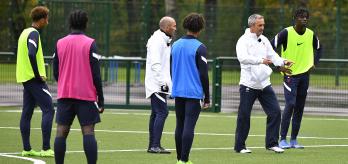
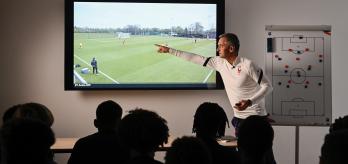
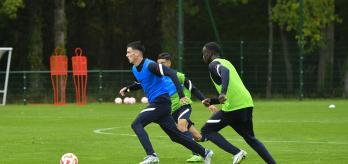
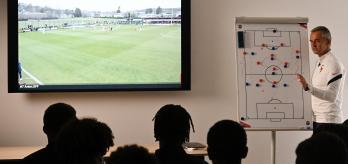
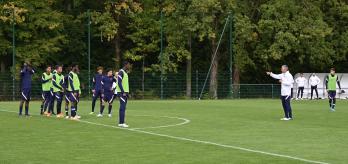
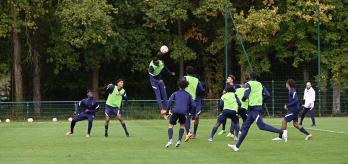
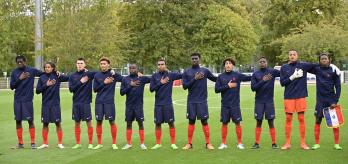
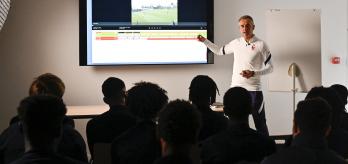
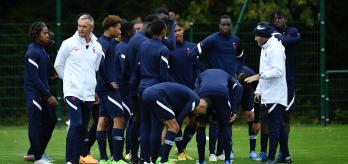
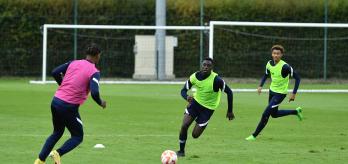

.variant64x64.jpeg)



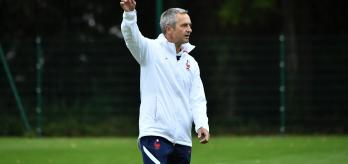
.variant348x164.jpeg)
